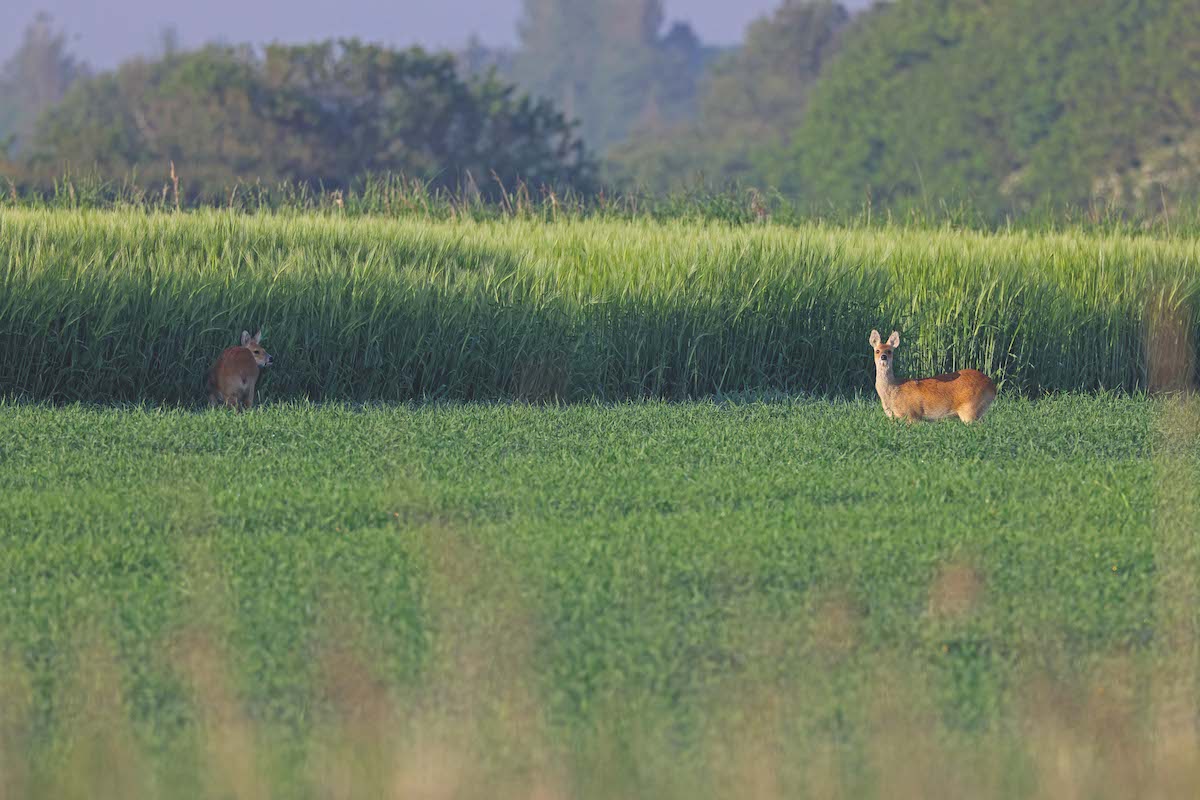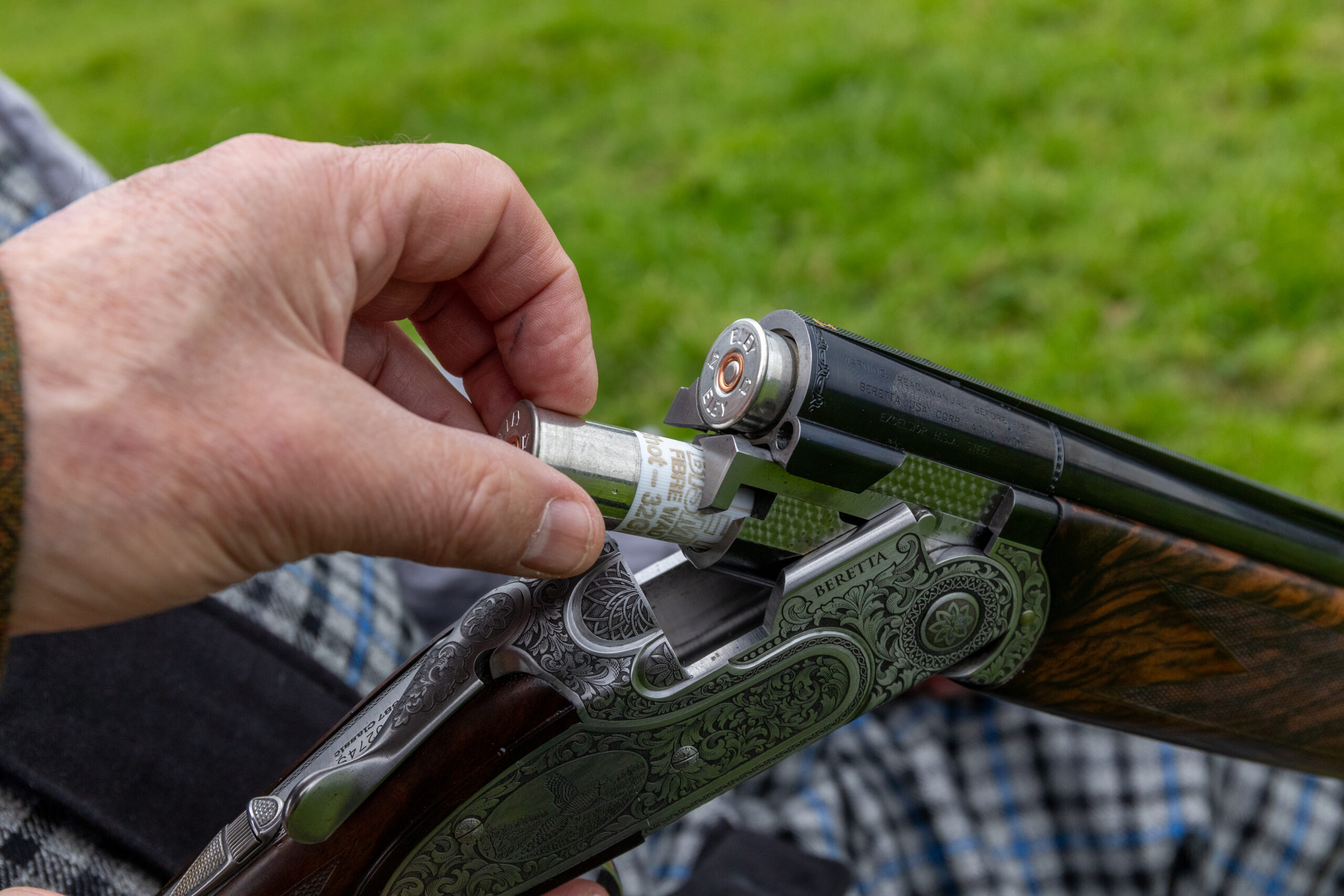Best deerstalking calibre: how to choose what is right for you
Charles Smith-Jones helps you figure out the alternatives when it comes to choosing the right rifle calibre for your needs

Most centrefire calibres will be suitable for UK deer
It is often said that if you want to start a good argument, ask a group of deerstalkers what the best deerstalking calibre is. Internet chat room threads on the subject regularly seem to run on forever, and if you raise the question around a pub table the protagonists will probably still be going at closing time. (Read rifle calibres explained.)
To add to the confusion, it is equally likely that all of the opposing sides will be right. The fact is, every experienced stalker will have a calibre that they have grown confident with over the years and have decided is the one to stick with.
This is, of course, no help to the newcomer who is looking at purchasing their own rifle, as they first must apply for a firearm certificate. Part of obtaining the certificate is specifying which calibre is wanted.
Let’s start with the law, which lays down minimum calibres and associated ballistics for shooting deer. There are slightly different rules for England, Wales, Scotland and Northern Ireland. For the shooting of healthy deer under normal circumstances, the current minimum requirements are shown in the following table overleaf. (Read more on choosing a calibre.)

Stalkers will develop their own bullet preference
Despite the wording of the various pieces of legislation, they tend to boil down to much the same thing. Of the commercially available firearm calibres, the .243 Winchester with an appropriate weight of bullet is probably the most practical minimum choice for shooting all species of deer in the UK.
For muntjac and Chinese water deer in England and Wales and roe in Scotland, many, though not necessarily all, of the .22 centrefire calibres are suitable, although great care must be taken selecting ammunition to ensure that it meets the minimum ballistic requirements. There are no maximum calibres laid down, although your choice may be restricted to what the police licensing authorities will consider to be appropriate.
Best deerstalking calibre
So, which is the right deerstalking calibre for you? If you will only be stalking muntjac or water deer to begin with (or roe in Scotland), it may be tempting to go for an appropriate .22 centrefire, but be aware that this may limit your options in the future if you get opportunities to stalk other species.
You should also be aware that if there is a legal move towards non-lead ammunition, ballistic performance will become a major issue where lighter materials than lead have to be used for bullet construction.
The .243 Winchester has been a popular deerstalking calibre for many years. With the right bullet weight it is legal for shooting all of the UK deer species. It also has a light recoil and is readily available. However, although it is an efficient and proven deer calibre, it may not always deliver the sufficient terminal energy required to anchor a deer on the spot where it was hit, as many stalkers of the larger species will testify. Once again, you would do well to consider your options should the statutory use of non-lead bullets be introduced in the future.
If wild boar is on your quarry list, there are currently no legal minimum calibres for shooting them in this country. Some commentators, however, suggest no less than 7mm with a bullet of 160-gr or more and a muzzle energy of 2,800 ft/lb. BASC recommends a minimum calibre of .270 with an appropriately heavy bullet for this tough and potentially formidable quarry. (Read more on the best calibre for wild boar.)
I would suggest considering a calibre around 6.5mm to 7mm, whatever the case. There are plenty to choose from within this range, and some of the most well-known include the .270 Winchester, .308 Winchester, 6.5×55 Swedish and the increasingly popular 6.5 Creedmoor. All have been shown to have performed well with appropriate non-lead ammunition, and there are many more.
My preference, though the stalkers sitting around that pub table may disagree, is the .308 Winchester. It has relatively low recoil, and yet using precisely the same soft point 150-gr ammunition has accounted for everything from 30lb muntjac (with minimal carcass damage) to 1,000lb Estonian elk, which took just two paces before dropping. I have used this calibre for over four decades and have a great deal of confidence in it. (Read an introduction to rifles.)

A larger selection of ammunition may be best to suit varying species of game
If there is a downside, it has a bullet trajectory that drops off relatively quickly compared with some other calibres, but the effect is negligible when it is fired at sensible stalking ranges. The 6.5 Swedish and 6.5 Creedmoor are equally sweet-shooting calibres, but they have a less marked drop in trajectory compared with the .308.
Recoil
Some mainstream calibres once had a reputation for having a loud report or vicious recoil, especially when a heavier bullet is fired out of a lightly built sporting rifle. Happily, this is no longer the issue it once was. A sound moderator will tame recoil and noise down to far more comfortable levels. Most stalkers use them these days, as they not only make shooting more comfortable but also enhance accuracy, while also protecting your hearing.
By far the best way to find out what may suit you is to try out a variety of calibres. Options for doing this may include asking friends who own them and going to range days arranged for members by organisations such as the British Deer Society or BASC, or at a Home Office-approved shooting club.
Whatever you decide upon, do make sure that ammunition is readily available. Some of the older calibres can be difficult to source. Some may be obsolete, others so scarce that users need to load their own. If in doubt, have a chat with your local gunsmith. Any of the calibres already mentioned should be stocked by most gunshops, and it is no accident that many have been with us for a very long time. The .308 Winchester appeared in the 1950s and the .270 Winchester in 1925, and astonishingly the 6.5×55 Swedish cartridge has been around since the 1890s. Their longevity is easy to explain; they simply work well.
The 6.5 Creedmoor has only been on the scene since 2007, but it quickly developed a devoted following. It should be with us for some time to come. Do beware, however, of other newly introduced calibres that may appear, briefly develop a reputation and persuade rifle manufacturers to chamber some of their rifle models for them and then disappear completely. It’s always best to go for the tried and trusted ones.

Bullet expansion , shown here using ballistic gel
Beware
I would always advise a newcomer to stalking to avoid ‘over-gunning’ themselves with too heavy a deerstalking calibre. Generally speaking, deer are thin-skinned and do not need bullets designed for dangerous game. One very unpleasant experience was shooting a DSC1 assessment after running a range and being invited to show them how it was done. I ended up borrowing an unmoderated .300 Winchester Magnum. It assaulted my senses with every shot, leaving me with a thumping headache and uncontrollable flinch.
It was a good job that I did not have to shoot again, as I certainly wouldn’t have passed a second attempt. This was definitely a case of too much gun, and a salutary experience. An experienced stalking friend, rifle club or reputable gunshop will be a great help in your deliberations, but choose carefully to identify a reliable source of informed advice.
The internet is full of opinions, some of them good but others not so helpful, and it can often be difficult to distinguish between the two. Never forget that a badly placed bullet will wound your quarry rather than despatching it humanely, irrespective of calibre, and you must be able to shoot accurately with whatever you decide on.
Finally, remember that you may have to persuade the licensing authority that you actually need the specific deerstalking calibre you’re applying for. You are unlikely to be granted a heavy Magnum calibre if all you will be shooting are muntjac or roe. You must be able to justify your choice, and with luck the next step of obtaining a firearm certificate should be plain sailing.

A moderator is a great tool to reduce gun sound









